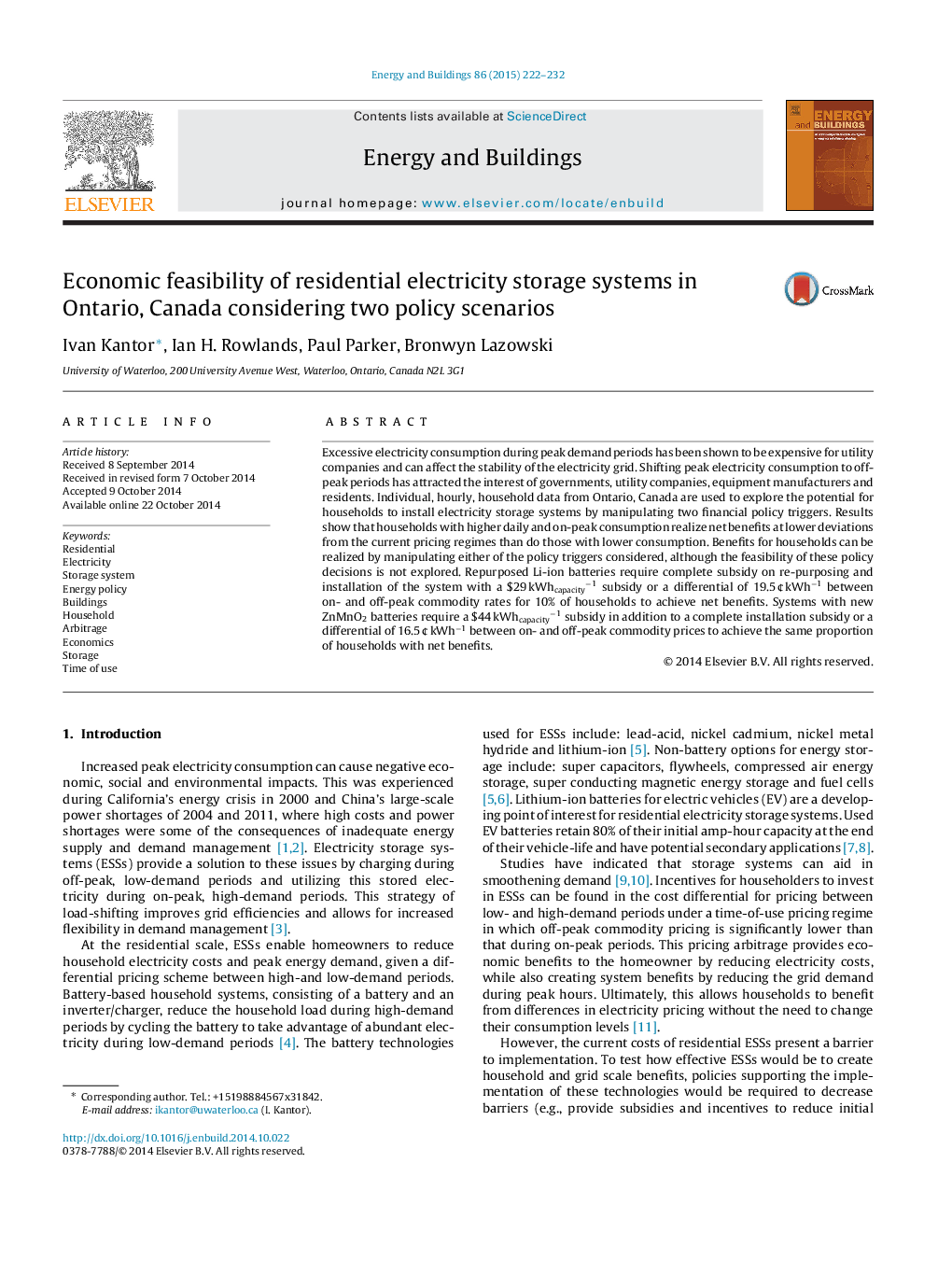| Article ID | Journal | Published Year | Pages | File Type |
|---|---|---|---|---|
| 6732697 | Energy and Buildings | 2015 | 11 Pages |
Abstract
Excessive electricity consumption during peak demand periods has been shown to be expensive for utility companies and can affect the stability of the electricity grid. Shifting peak electricity consumption to off-peak periods has attracted the interest of governments, utility companies, equipment manufacturers and residents. Individual, hourly, household data from Ontario, Canada are used to explore the potential for households to install electricity storage systems by manipulating two financial policy triggers. Results show that households with higher daily and on-peak consumption realize net benefits at lower deviations from the current pricing regimes than do those with lower consumption. Benefits for households can be realized by manipulating either of the policy triggers considered, although the feasibility of these policy decisions is not explored. Repurposed Li-ion batteries require complete subsidy on re-purposing and installation of the system with a $29 kWhcapacityâ1 subsidy or a differential of 19.5 ¢ kWhâ1 between on- and off-peak commodity rates for 10% of households to achieve net benefits. Systems with new ZnMnO2 batteries require a $44 kWhcapacityâ1 subsidy in addition to a complete installation subsidy or a differential of 16.5 ¢ kWhâ1 between on- and off-peak commodity prices to achieve the same proportion of households with net benefits.
Keywords
Related Topics
Physical Sciences and Engineering
Energy
Renewable Energy, Sustainability and the Environment
Authors
Ivan Kantor, Ian H. Rowlands, Paul Parker, Bronwyn Lazowski,
